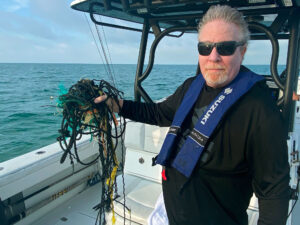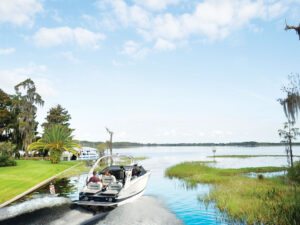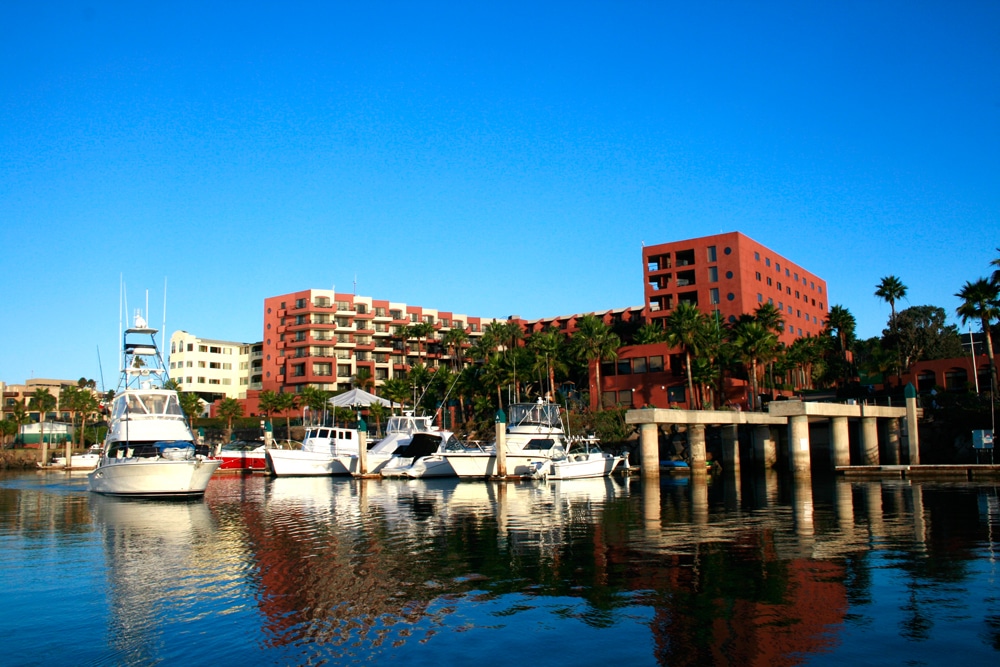
Trailer Boating to Ensenada
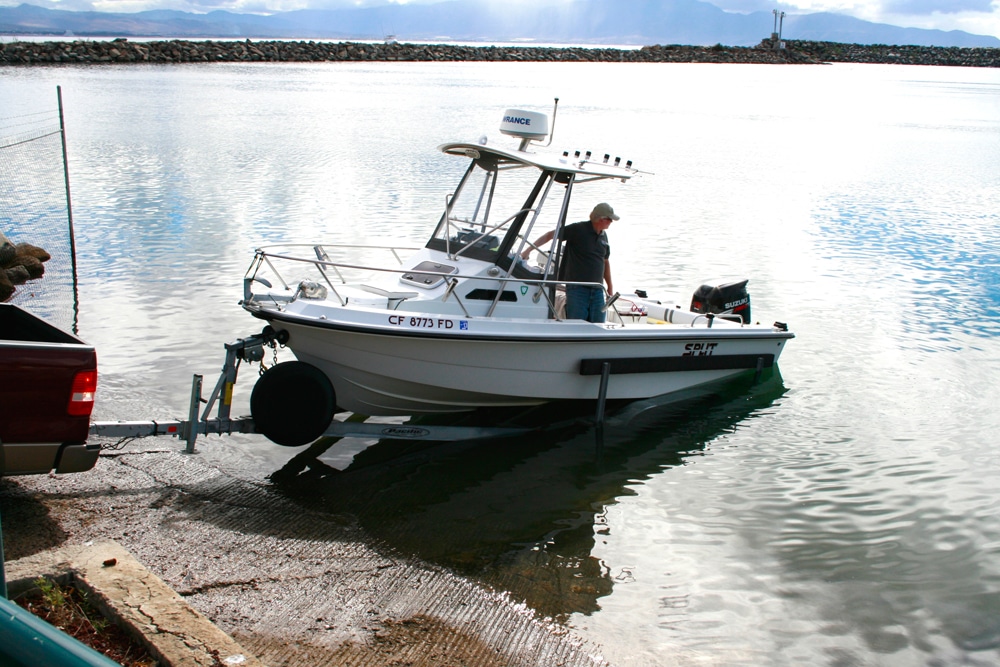
Trailer Boating to Ensenada
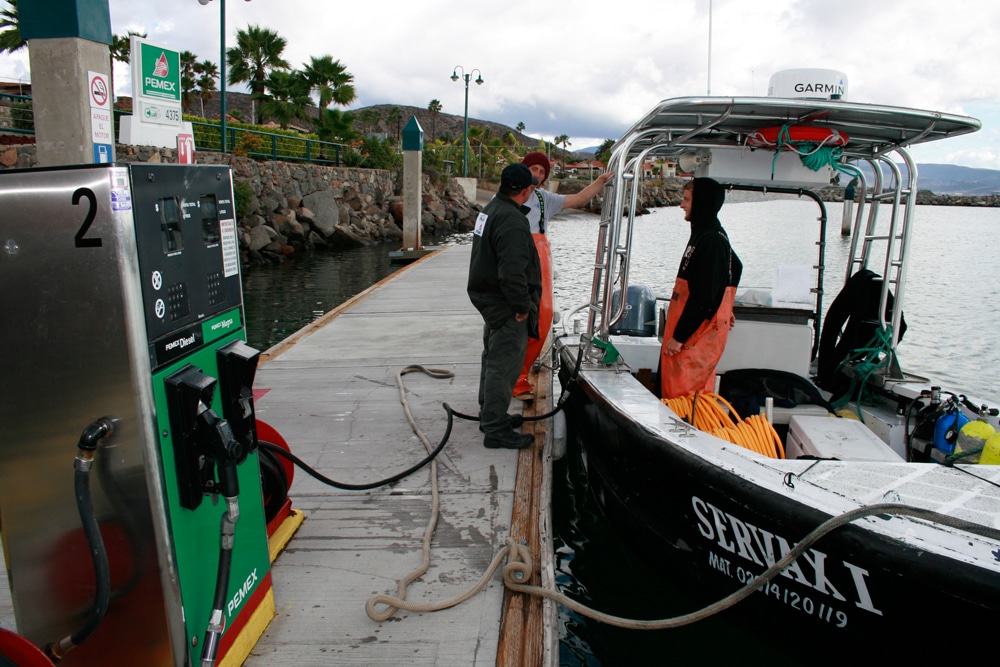
Trailer Boating to Ensenada
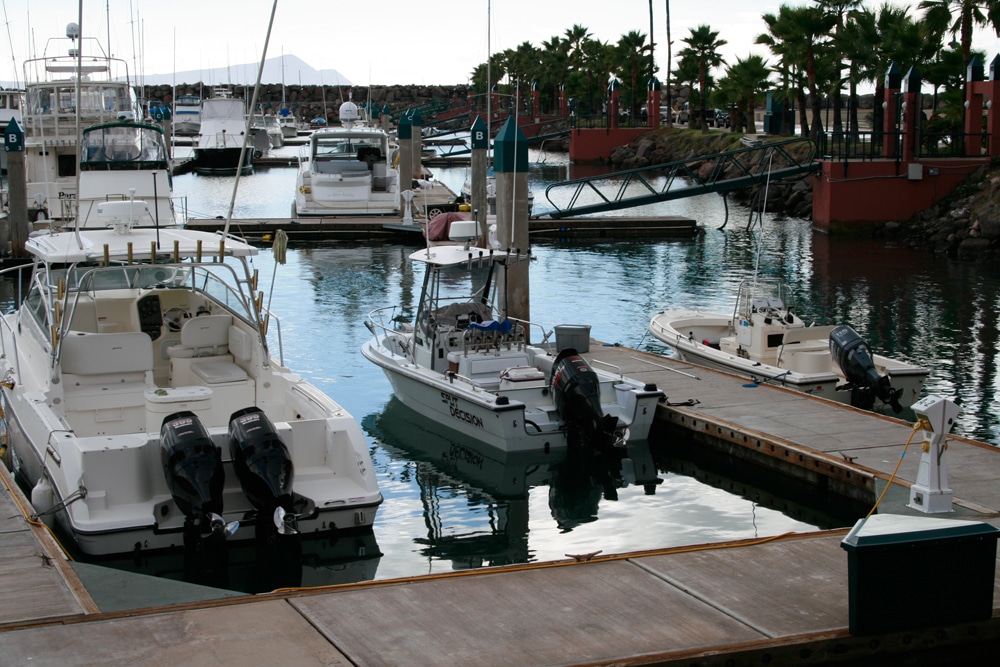
Trailer Boating to Ensenada
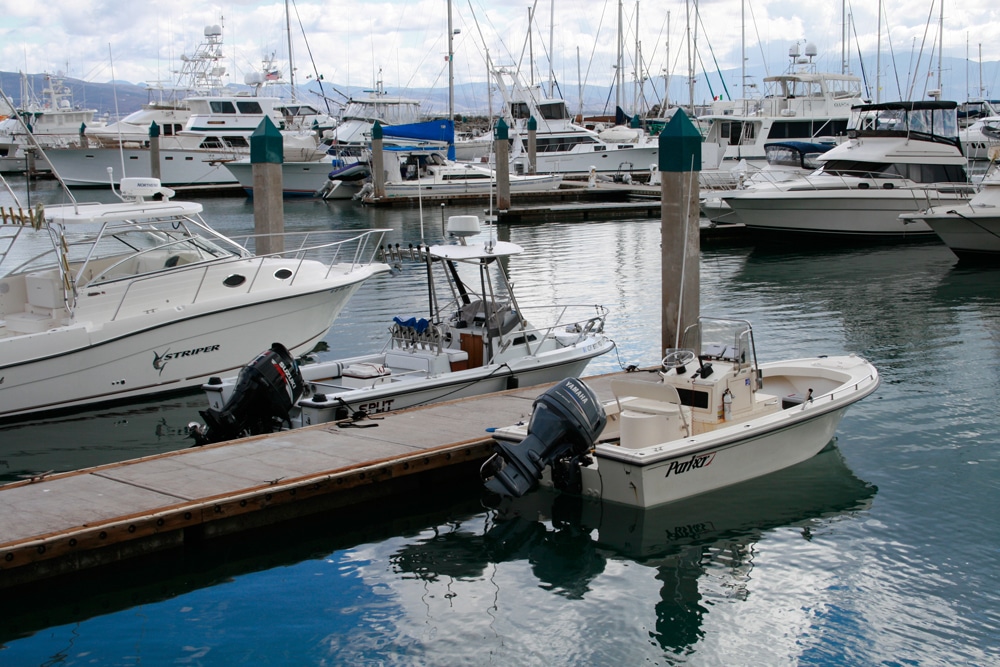
Trailer Boating to Ensenada
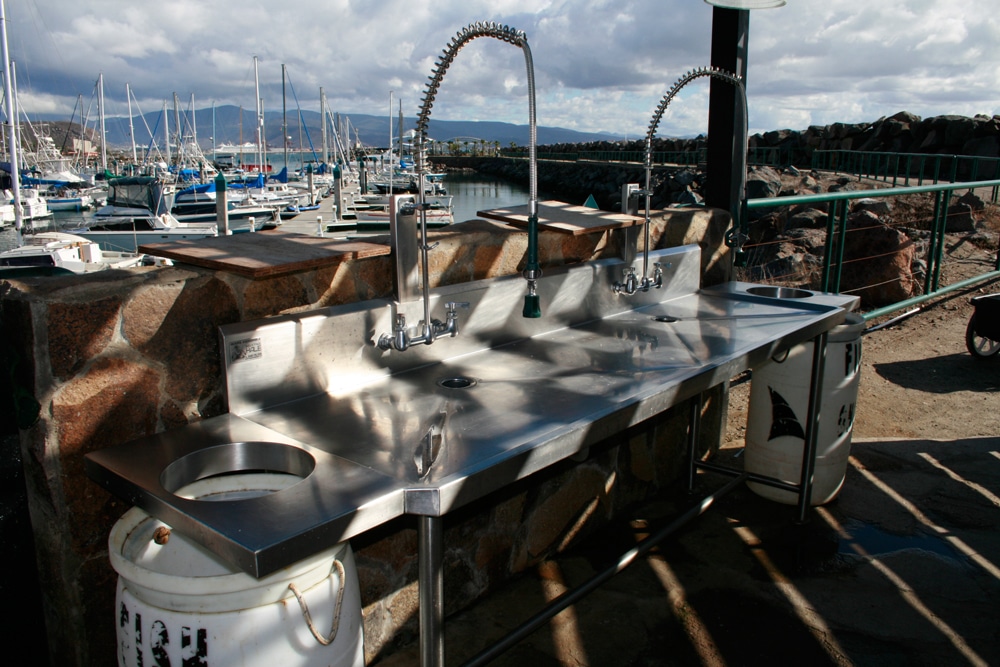
Trailer Boating to Ensenada
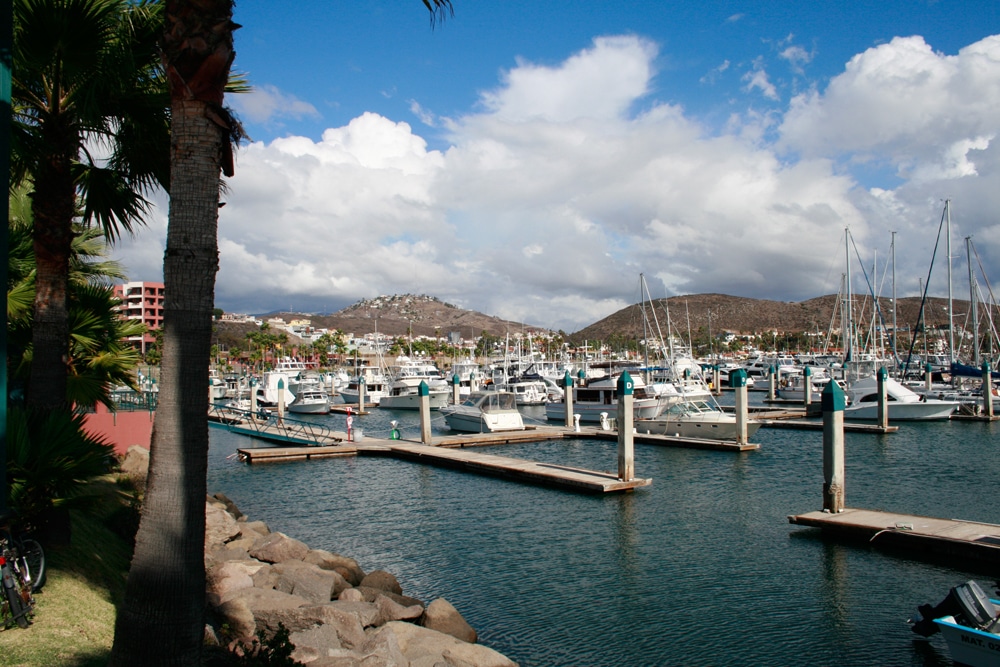
Trailer Boating to Ensenada
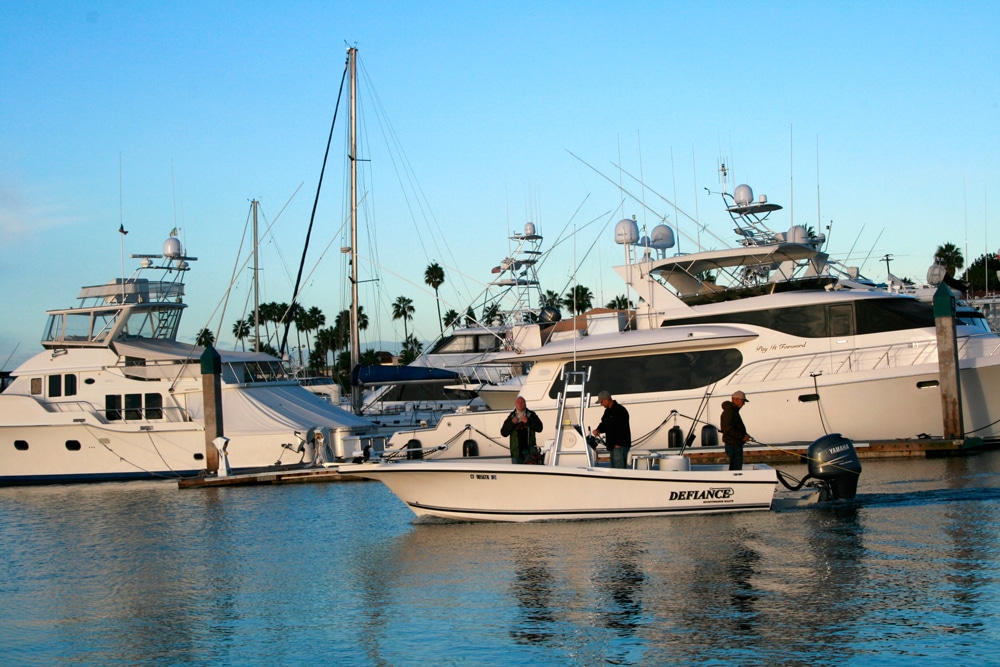
Trailer Boating to Ensenada
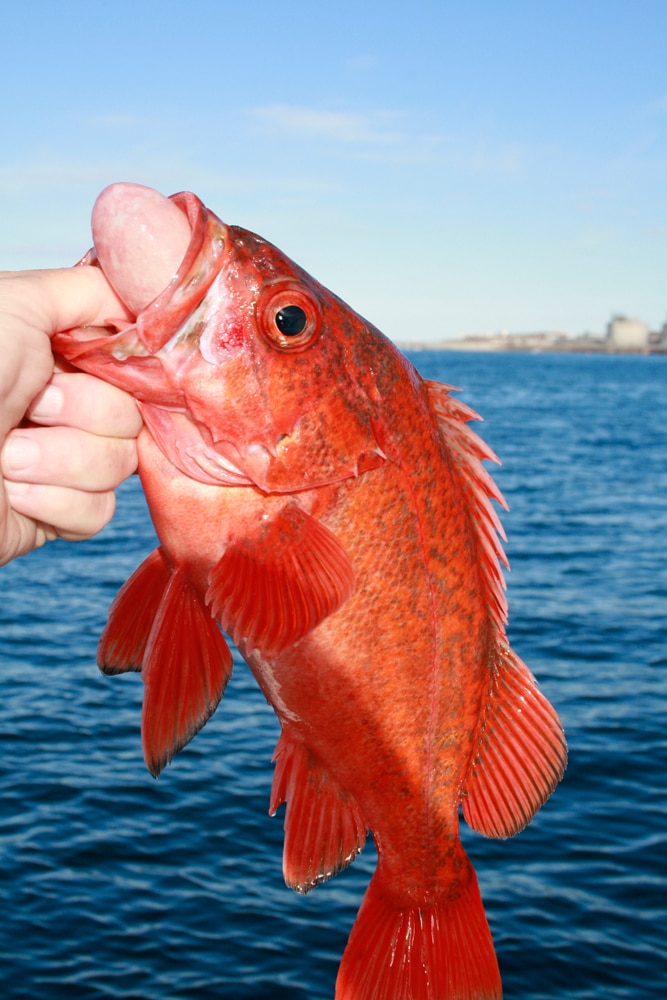
Trailer Boating to Ensenada
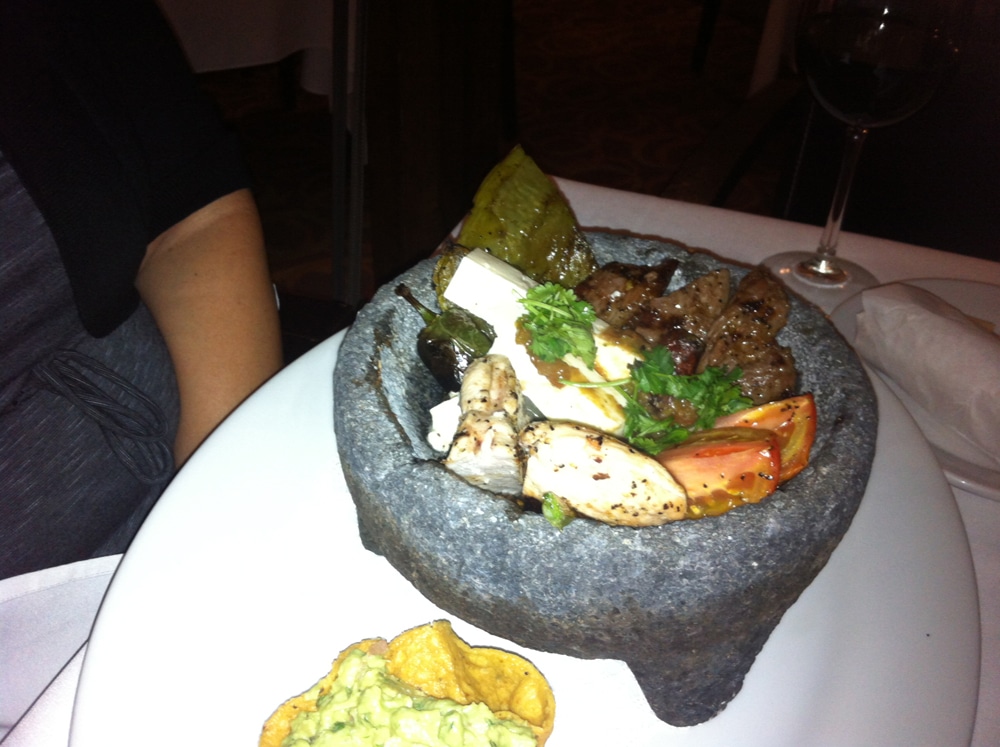
Trailer Boating to Ensenada
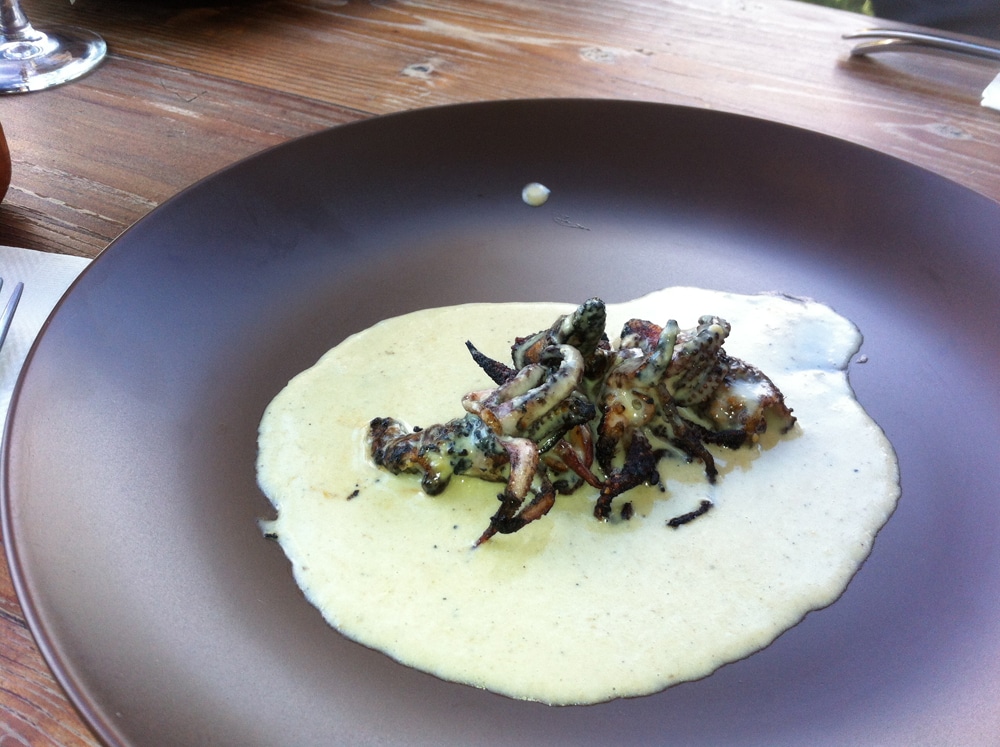
Trailer Boating to Ensenada
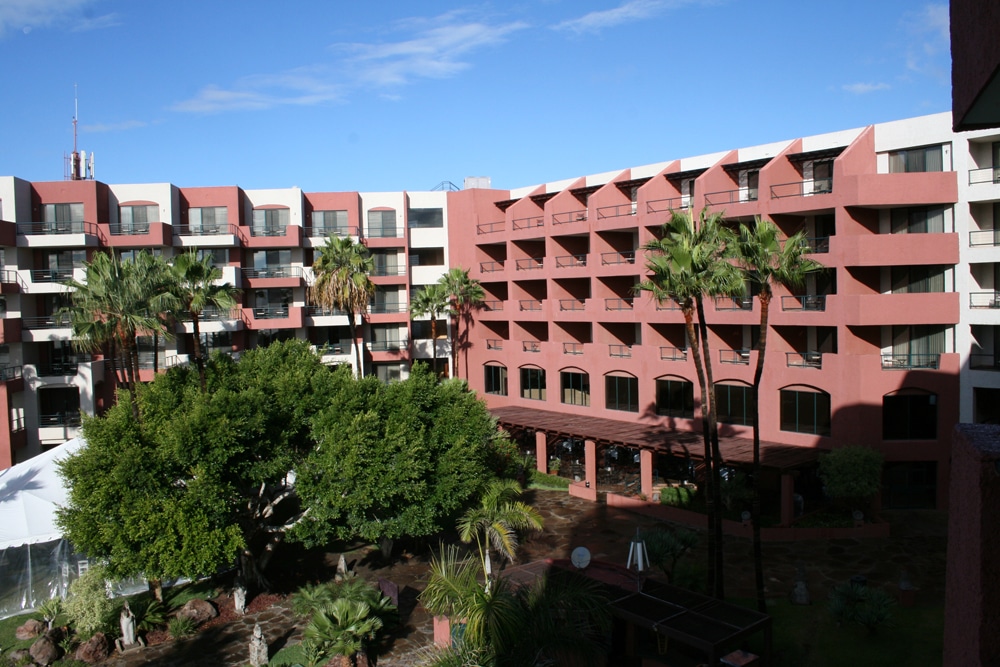
Trailer Boating to Ensenada
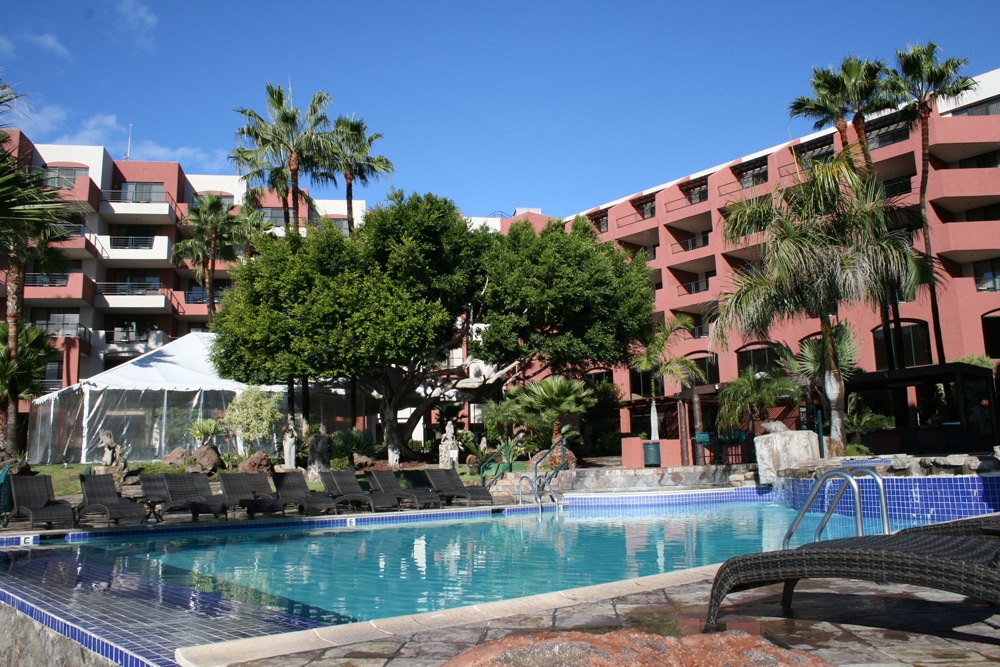
Trailer Boating to Ensenada
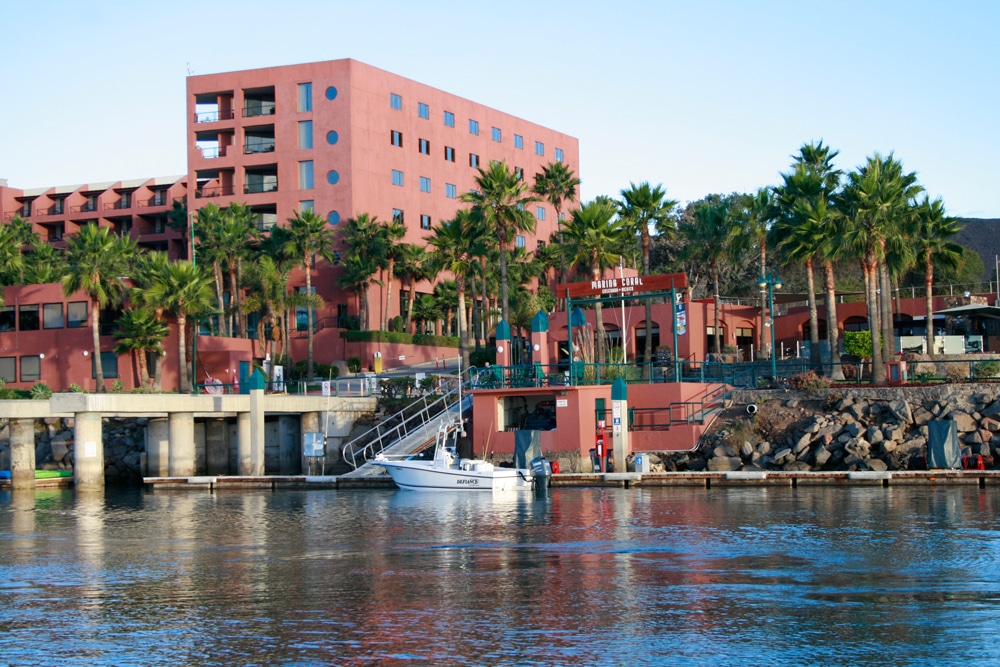
Trailer Boating to Ensenada
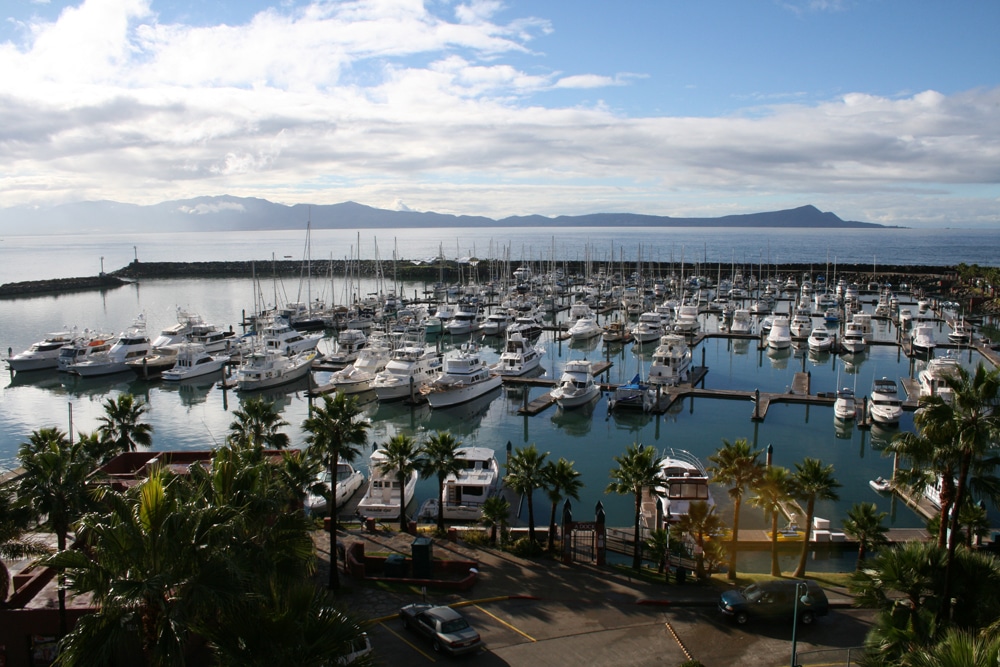
Trailer Boating to Ensenada
West Coast boaters today are imbued with a healthy dose of caution when it comes to towing their boats to Mexico, particularly when traveling through border towns. Yet, my wife, Kathleen, and I decided to do it anyway on occasion of our 38th wedding anniversary.
Our original plan was to launch our 22-foot saltwater fishing boat in San Diego and cruise to the Hotel Coral and Marina near the coastal town of Ensenada, some 60 nautical miles down the coast. The resort was hosting us for four days. However, rough seas and prudent seamanship put a halt to the idea of getting there by water.
So, after a brief but decisive discussion, we decided to tow our boat to Ensenada instead. Though we have cruised and fished with this boat in Mexican waters before, this would be the first time we towed it into Mexico.
Before getting to the border, we stopped in San Ysidro (the last U.S. city before the border) and purchased Mexican insurance for our truck, trailer and boat. Our vehicles and boat were fully covered by a U.S. insurer, but Mexican law requires coverage for on-road vehicles from an insurance concern in Mexico. The cost for the minimum requirement was $56 for four days.
Border Crossing
I will admit to clenching pretty tightly as we passed the point of no-U-turn on the I-5 freeway south. Yet, the crossing into Mexico was relatively uneventful, though we were detained by Mexican customs officials while they confirmed registrations of the truck, trailer and boat, and went through the boat – presumably checking for firearms and illegal drugs. Having found nothing inappropriate, the officials waved us on. If you’re towing a big boat, be aware that the inspection lanes are relatively narrow, and it is a tight turn to enter. I barely made it with our rig.
From the border, bear to the right to get on southbound Mexico 1, the beginning of Baja California’s transpeninsular highway. The road is well marked, making it easy to stay on track. The initial portion of the drive skirts the city of Tijuana and parallels the imposing steel wall that marks the border along the brown hills between the two countries. It eventually leads to a scenic toll road that will take you the 65 miles to Ensenada and the Hotel Coral and Marina. There are three toll stations along the way, and you will need to pay 33 pesos, or $4.80, at each.
Scenic Drive
The highway largely parallels the rugged Pacific coast, and the vistas become spectacular at times. North- and south-bound traffic is widely separated, with two lanes in each direction. We found the road in good repair, save for a one-mile stretch of construction. The Mexican transportation department must love speed bumps, as they use them liberally to slow vehicles in advance of construction areas and the occasional curva peligrosa (dangerous curve). Keep this in mind when you’re towing a boat, as hitting the speed bumps at anything above dead slow can wreak havoc with the tow vehicle and trailer.
The exit to the Hotel Coral and Marina is north of the main portion of Ensenada, and just a few hundred yards past the Universidad Autonoma de Baja California. About an hour and half after crossing the border, we turned right on to the expansive property, and were immediately treated to a magnificent view of Bahia Todos Santos (All Saints Bay) and the two small islands by the same name that guard the bay.
After checking in at the Hotel Coral, we launched the boat at the marina’s private concrete ramp. It is a bit on the steep side, so if you go there, try to use the ramp on a high tide to avoid the slippery bottom portion.
Marvelous Marina
Our tour of the marina with Fito Espinoza, the marina dockmaster, revealed a facility that’s as good or better than anything the U.S. has offer. The 350 boat slips and adjoining concrete docks are meticulously maintained, and security is tight. You need a key card to get through the gate at each gangway, and marina security staff patrol 24/7.
Built 18 years ago, a massive manmade breakwater and jetty surrounds the harbor, with a single inlet at the southwest corner. This protects the marina from prevailing winds and swells out of the west and northwest. The marina can accommodate vessels up to 110 feet in length.
The marina is unique in a number of ways. For one, it is the first marina with fuel below the U.S. border, making it the first port of call for most American boaters cruising south from San Diego. In fact, as unlikely as this sounds, it is the only marina with a fuel dock along the entire Pacific Coast of Baja California. The next fuel dock is in Los Cabos, approximately 720 nautical miles away.
To be clear, there is fuel available to cruising boaters in ports such as San Quintin, Bahia Tortugas (Turtle Bay) and Bahia Magdelena (Mag Bay), but you’ll have to arrange to have it ferried out in cans or drums or pumped from a long hose dropped from a tall pier, as in Turtle Bay.
The Pemex dock at the Hotel Coral Marina makes it much easier, and the fuel prices were reasonable – about $3.65/gallon for either gasoline or diesel. If you came by water, you can also clear Mexican customs at the marina office.
Also unique to this marina is the presence of the live-bait barge where you can purchase live sardines before you head out for inshore species such as kelp bass, rockfish and halibut, or offshore in the summer for mahi, tuna and California yellowtail.
We had a chance to visit and make friends with some of the American boaters in the marina, including Mike and Joann Knappe, who dock their 65-foot Mikelson in the marina on a permanent basis. The veteran boaters prefer the Hotel Coral Marina to anything they have experienced in Southern California. “At $11/foot per month, the price is worth every cent,” said Mike.
For slip reservations, click on Hotel Coral Marina.
Wine Country
Windy sea conditions kept us tied to the dock the first day of our stay, and so we took advantage of the time to enjoy a tour of the outstanding wineries in the beautiful Valle Guadalupe (Guadalupe Valley), just inland from the coast.
One of our favorite stops included lunch at Malva Cocina de Baja California, an open-air café with an adjoining winery, Vinedos Mina Penelope, atop a hill overlooking the western portion of the valley. Here Paris-trained Chef Roberto Olcocer treated us to six courses of nouveau cuisine that included local seafood dishes such as black clams, ceviche and escolar, as well as a Malva signature salad with locally foraged native greens (including malva leaves), blossoms and homemade goat cheese. The main course consisted of delicious stewed mutton from lambs raised at Malva’s private farm. For dessert, we enjoyed homemade ice cream sprinkled with popcorn.
We finished our wine tour at Adobe Guadalupe, a picturesque rancho accessible only by dirt roads and well-removed from the main highway. Not only is Adobe Guadalupe a winery, but also a relaxing bed and breakfast set amid rolling hills. In addition, prized Azteca horses are bred here. We felt tranquility descend upon us as we toured the inn, relaxed in the courtyard and gazed out over the vineyards, or then again, maybe it was the wine. Adobe Guadalupe produces several varieties and blends of red wine, each named after an archangel in memory of the owners’ son, who died well before his time.
The six-story, horseshoe-shaped Hotel Coral (pronounced in Spanish like “corral”) offers luxurious accommodations, with each of its 147 spacious suites boasting a spectacular view of Bahia Todos Santos, not to mention the resort’s outdoor pool and the marina. So you can glance out from the balcony to check on your boat. The vista from our room also encompassed the port of Ensenada, and given that our trip took place in late fall, we could see both the sunrise and sunset from our balcony.
We were treated to world-class dining at the hotel’s Bistro & Cava restaurant. Among the most memorable dishes was the molcajete (pronounced MOLE-KA-HAY-TAY) – a stew served in a super-heated tureen carved from lava rock. My favorite, seafood molcajete, included a delicious blend of clams, mussels, scallops, octopus, abalone and jalapeno peppers. My wife’s favorite was the malcajete combo with chicken, strips of beef, peppers and other vegetables.
We also enjoyed incredible hospitality at the Coral. The resort staff was warm and welcoming. The hotel stands today as the finest in Ensenada.
Fantastic Fishing
The winds finally settled the next morning, and we headed out on to the calm Pacific for some boating and fishing. Morning is the best time to go, as the afternoon is usually announced by freshening winds out of the northwest. We cruised to Punta Salsipuedes, 11 miles up the coast. The name Salsipuedes has an ominous tone. “Get out if you can” is the English translation. Refusing to accept it as a bad omen, I figure it means get out and go fishing if you can. We dropped baits on some rocky pinnacles in about 120 feet of water, and immediately started catching rockfish. We loaded the cooler with vermillion rockfish and boccacio in about 45 minutes.
On the cruise back to the marina, we listened to an interesting and interactive VHF radio broadcast among boaters cruising the Pacific coast of Baja California. Called The Cruisers Net, it is based out of the Hotel Coral Marina, and operates Monday through Saturday on channel 69 beginning 8 a.m. (9 a.m. on Saturday) under the auspices of Ensenada Cruisers. We listened as the moderator invited new arrivals to introduce themselves, and then hosted segments such as Project Assistance (for DIY help), Bilge Treasure (a radio swap meet of sorts) and other subjects. The group also has a Thursday night get-together at the marina. While consisting mainly of sail boaters, the group can be helpful to anyone boating in this region.
Lines at the Border
On the morning of our departure, we loaded the boat on the trailer and began the drive back to the border. Once again, the scenery along this rugged coast was magnificent at times. As we neared the border, I began to clench again, as I had heard terrible stories of 5-hour waits to cross into the U.S.
Sure enough, all six lanes of traffic came to a halt two miles before the U.S. checkpoint. We were in for a two-hour, bumper-to-bumper crawl. Street vendors selling everything from fruit smoothies to sombreros kept us occupied, as we politely refused to buy, if not entertained. Interestingly, we were the only vehicle we observed towing a trailer of any sort. Commercial traffic uses a different checkpoint, so you don’t have to deal with semi-trucks clogging up the regular lanes.
If you do go to Mexico, take your passport. U.S. Customs and Immigration needs to see these before they will let you back in the country. Also be aware that once you leave the Tijuana/San Ysidro checkpoint, the route to the I-5 is fairly circuitous, with concrete K-rails on each side of narrow lanes. If you’re towing a big boat, negotiating this tortuous route without scraping the trailer fenders can be challenging.
Yet, we made it unscathed. And while we were happy to be back in the U.S., we were soon making plans to return to Ensenada and the Hotel Coral and Marina on another adventure. It’s nice to know we can get there by sea or land, and enjoy boating either way.

